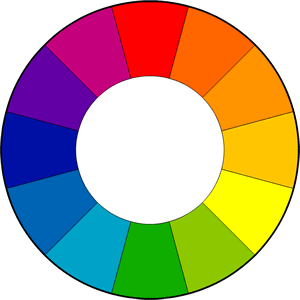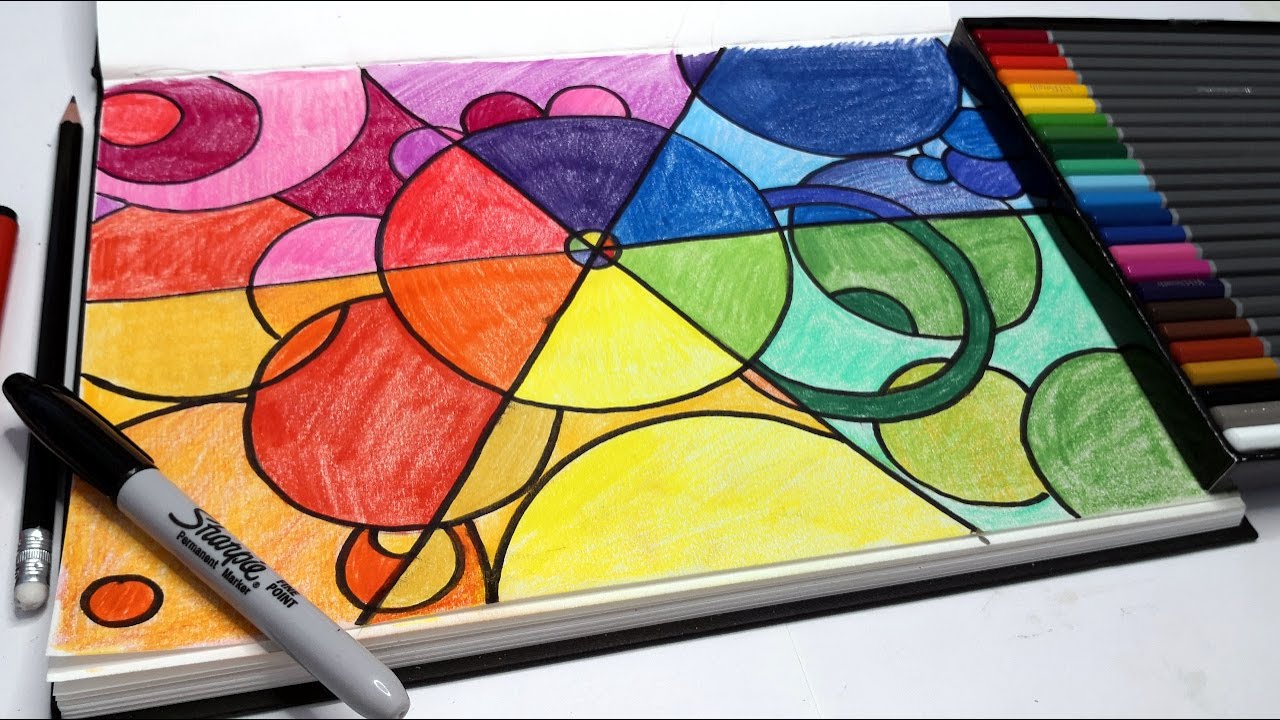Color Wheel Guide
Create a color wheel and then use it to find a variety of color schemes that will work for getting dressed, decorating, or making art and craft projects.
 Whether you are getting dressed in the morning, decorating your room, or working on an art or craft project, your options for combining colors can seem to confound. You may wonder why some color combinations work better than other combinations.
Whether you are getting dressed in the morning, decorating your room, or working on an art or craft project, your options for combining colors can seem to confound. You may wonder why some color combinations work better than other combinations.
This easy exercise uses the color wheel and allows you to see the reasoning behind basic color combinations. This will help you understand why some colors coordinate and others don’t. Many art terms exist to describe combinations such as, analogous, complementary, and triadic – don’t get overwhelmed by the terms. Keep referring to the color wheel you will make.
Materials to Create a Color Wheel
You will need a new box of basic colored markers – red, yellow, orange, green, blue, violet, black, white, brown, and some white paper (photocopy paper will be fine). If you use older markers that produce faded colors, you may want to use crayons or colored pencils.
How to Make a Color Wheel
Trace a dessert plate and divide the drawn circle into six equal sections.
Color the sections clockwise in this order – red, orange, yellow, green, blue, and purple. Try to use equal pressure when coloring each section. You don’t have to bear down hard. Draw with short back-and-forth strokes that will allow you to build up the color.
Even if you are familiar with the order of a color wheel, making one on your own will give you a visual reference.
Color Combinations
Primary, Secondary, Analogous, Complementary, and Triadic Combinations
The concepts are a bit easier than the words to describe the ways colors work with one another on the color wheel.
Primary colors
The primary colors are red, yellow, and blue, which are your basic palette and can be mixed together to create secondary colors. If you use these colors in a craft project, in an outfit, or in your room, the colors will look good together.
Secondary colors
The secondary colors are orange, green, and purple. Although this may seem like an odd color combination, the colors work together because they are triadic colors (see below) as well as secondary colors on the color wheel.
Analogous colors
Analogous colors are next to one another on the color wheel. Red is analogous to purple as well as orange.
Complementary colors
Complementary colors are opposite one another on the color wheel. Blue is a complementary color to orange because they are on either side of the color wheel.
Triadic Colors
Triadic Colors are evenly spaced in a triangle shape around the color wheel. Although red, yellow, and blue are primary colors, they are also triadic colors.
Creating Color Schemes
- Fold some white paper into quarters. On each quarter sheet, you will color the different combinations described below. Work in the center of each quarter and color squares approximately one inch in size so you can clearly see the combinations.
- On paper, color the primary colors next to one another. One another quarter of the page, mark the secondary colors next to one another.
- Next, use your markers, pencils, or crayons to color all of the possible analogous color combinations. Put one combination in each quarter of the page.
- Color all the complementary color schemes you can find while referring to the color wheel.
- Look for all the possible triadic combinations and color each one onto a different quarter of the page.
Keep these sample sheets of the different color schemes so you have a visual reference to examine when working on a project. After a while, you will remember these different color combinations in relation to the color wheel.
